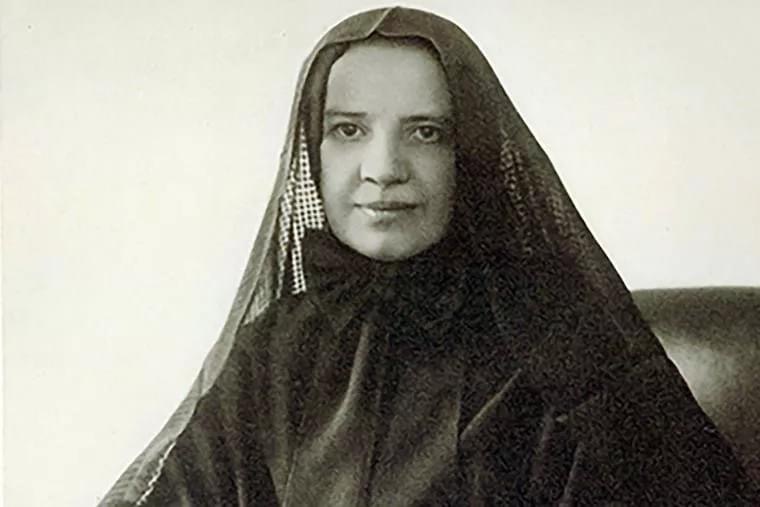
In contemporary times, the distinction between charity and philanthropy is often misunderstood. Charity involves direct, immediate aid to those in need, such as providing food or financial help to address urgent societal issues. In contrast, philanthropy is characterized by a long-term, sustainable approach, investing in education and healthcare to foster community development. The question arises: what defines a saint without miracles, and of what is a saint’s halo composed?
During the 1820s, American entrepreneurs began to engage in philanthropy, notably supporting private educational institutions and hospitals. George Peabody (1795–1869), the founder of JPMorgan Chase, is recognized as the pioneer of modern philanthropy. As a financier in Baltimore and London, he initiated the funding of libraries and museums in the United States and housing for the impoverished in London during the 1860s. His philanthropic endeavors set an example for industrial magnates like Andrew Carnegie (1835-1919), John D. Rockefeller Sr. (1839-1937), and Henry Ford (1863-1947).
In 1866, Queen Victoria (1819-1901) sent a letter to Peabody, commending his philanthropic efforts through the Peabody Donation Fund to enhance the living conditions of London’s destitute. The Queen’s letter, a rare acknowledgment, especially for a non-British citizen, conveyed her appreciation and admiration, expressing her wish to personally thank him. This gesture underscored the significance of benevolence and international collaboration in social welfare, setting a benchmark for global philanthropic initiatives.
However, the most sacred legacy of that era emerged from the humble heart of Mother Maria Francesca “Frances Xavier” Cabrini (1850-1917), an Italian-American Catholic nun. She established the Missionary Sisters of the Sacred Heart of Jesus (MSC), a religious order that significantly supported Italian immigrants in America.
Mother Cabrini was born prematurely into a large family in Sant’Angelo Lodigiano, Lombardy, Italy, on July 15, 1850, and faced health challenges from birth. Despite nearly drowning as a child, which led to a lifelong fear of water, she bravely crossed the Atlantic 27 times to fulfill her divine mission.
After the death of her parents in 1870, Cabrini became the headmistress of the House of Providence orphanage in Codogno, where she educated and gathered a small group of women. She took her religious vows in 1877, adopting the name Xavier in honor of Francis Xavier, the co-founder of the Jesuits and patron saint of missionaries. Like Francis Xavier, she aspired to be a missionary in Asia.
From a young age, Cabrini was inspired by missionaries recounting their experiences of spreading the Gospel in the East. Although her poor health and gender led to rejections from existing religious orders, a local bishop recognized her passion and encouraged her to establish her own religious community.
In November 1880, Cabrini and six companions founded the MSC in Lodi, Lombardy. She authored the convent’s Rules and Constitution and served as its superior general until her demise. The sisters cared for orphans and abandoned children, opened day schools for funding, taught sewing classes, and sold elaborate embroidery. Within five years, the institute had established seven homes, a school, and a free kindergarten. Subsequent missions included a boarding school for girls in Milan, among others. Over seven years, Cabrini’s leadership led to the creation of seven institutions, all managed by nuns she trained. Her charitable works eventually drew the attention of Giovanni Scalabrini, the Bishop of Piacenza, and Pope Leo XIII.
In September of 1887, Mother Cabrini sought the Pope’s blessing to start a mission in China. However, he directed her instead to the United States to aid the influx of impoverished Italian immigrants, advising her, “Not to the East but to the West.” Consequently, in 1889, she and six fellow nuns embarked on a journey to America, departing from Codogno by train and reaching Le Havre to board the Bourgogne ship, alongside 1,500 immigrants, destined for New York City.
The sisters endured second-class travel, chronicling the tumultuous voyage marked by relentless seasickness and observing the even harsher conditions of third-class passengers, likening their quarters to “no better than a stable.” Despite their own discomfort, they devoted their time to assisting the less fortunate aboard. The voyage was fraught with icy conditions and perilous storms, lasting 12 days before they arrived in New York to welcoming weather and clear skies, marking the commencement of Mother Cabrini’s mission in the New World.
In the 1890s, the substantial Italian community in New Orleans faced discrimination and hostility, resulting in violence and the murder of several Italians. Mother Cabrini and her nuns were summoned to intervene. They found that yellow fever had orphaned many Italian children, prompting them to establish an orphanage to protect the young ones from the epidemic. They embraced these challenges with genuine altruism.
Mother Cabrini and her six companions began their ministry in New York’s slums, supporting their first orphanage by soliciting donations in the impoverished Little Italy. They set up a modest, underfunded hospital for destitute Italians. Mother Cabrini advocated for the humane treatment and improved living conditions for immigrant orphans, particularly those from Italy in the Five Points area, despite not speaking English. Initially, New York was unprepared for their arrival, and the nuns spent their first night in a squalid room within an Italian ghetto. They soon realized they lacked the necessary funds for sustenance, leading them to seek assistance from Archbishop Michael Corrigan (1839-1902), who initially suggested Mother Cabrini return to Italy. However, moved by her unwavering resolve to stay and assist, he offered his support. The film “Gangs of New York” by Martin Scorsese provides context to the Italian experience in New York, 25 years prior to Mother Cabrini’s arrival. Her mission included educating all immigrants, especially children, and despite relying on modest donations, her resourceful nature helped navigate numerous challenges.
By July 1891, Archbishop Corrigan, acknowledging her contributions, invited her to manage a hospital for Italian immigrants. With assistance from Countess Mary di Cesnola and her daughters, the facility reopened as Columbus Hospital on East 19th Street, later known as Cabrini Medical Center. The hospital served all, regardless of their ability to pay, with doctors offering their services pro bono. Mother Cabrini’s achievements in New York led her to Chicago, which faced similar immigration issues. The city’s burgeoning but impoverished Italian community was in dire need of educational, healthcare, and spiritual support.
Mother Cabrini and her fellow nuns quickly gained recognition for their compassion towards the poor Italian immigrants, providing education, healthcare, and spiritual care across major settlements from New York to the West Coast. The growing demand for their services prompted Italian ecclesiastical leaders to urge Cabrini to broaden her mission across the nation. By 1895, she was active in various American cities and even established a school in Nicaragua. Her dynamic and visionary leadership drew many women to her congregation, significantly expanding its global reach. Over the next 28 years, she tirelessly founded schools, hospitals, orphanages, and novitiates in cities like Chicago, New Orleans, and Los Angeles. Renowned for her business savvy in securing resources and fundraising, Mother Cabrini showed remarkable resilience and was actively involved in construction efforts, inspiring a spirit of perseverance among her followers. In 1909, she became a U.S. citizen, solidifying her impact on American social and philanthropic work.
Throughout her lifetime, Mother Cabrini founded 67 missions in major cities around the world, including Chicago, Philadelphia, and as far as Latin America, Europe, Africa, and Australia. Her work primarily focused on aiding the sick and poor, a precursor to the expansion of governmental social services. Her enduring legacy enabled her followers to realize her dream of establishing a mission in China by 1926, nine years posthumously. In 1928, Cardinal George Mundelein recognized two miracles attributed to her, leading to her beatification by Pope Pius XI in 1938. She was canonized in 1946 by Pope Pius XII, becoming the first American citizen to achieve sainthood. In 1950, in homage to her unwavering commitment to immigrants, St. Frances Xavier Cabrini was proclaimed the Universal Patroness.
The philanthropic footprint left by Saint Cabrini illustrates that selflessness can triumph over self-interest, resulting in one of the world’s most expansive and impactful charitable networks, surpassing even the Rockefeller and Carnegie foundations. Her hands-on, compassionate approach to aiding immigrants and the underprivileged showcased an empathy unmatched by mere policy-driven initiatives. Mother Cabrini’s work met the immediate needs of those she served, proving that the true measure of philanthropy lies in its deep and lasting humanitarian impact. Her “empire of altruism” stands as a powerful symbol of the impact that devoted, selfless service can have within the sphere of global philanthropy. The sacred heart is akin to angelic wings, and the halo that adorns the humble saint shines brightly.
Related
Source: Vietnam Insider
